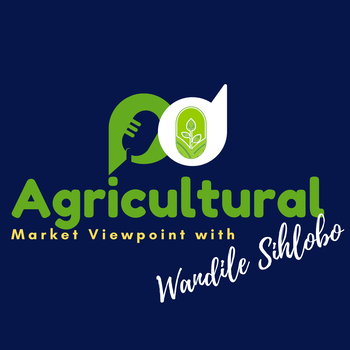
SA maize and wine outlook
Loading player...
The latest harvest news in wine grapes and maize paints a mixed outlook for these two subsectors. In this week’s podcast, we explore the production conditions in these separate subsectors, and the outlook for the harvest.
First, South Africa’s wine grapes for this year are projected to be lower than the 2022 harvest because of unfavourable weather conditions earlier in the season. The South African Wine Industry Statistics will release its production estimates later in February but has already indicated the prospects of lower yields. This means the wine production could also be lower than 2022 levels, with preliminary estimates pointing at an output of around 800 million litres.
This will add pressure to an industry still recovering from the slump through the worst of the Covid-19 pandemic, where the ban on sales at various intervals had a severe negative financial impact. Importantly, this industry is labour-intensive. Therefore, any additional financial strain in an already low-profit environment could negatively influence employment conditions, particularly seasonal labour. One effective response measure to assist the wine industry, especially through this tough year, would be for the National Treasury to review the excise tax burdens for wine. These are currently at 11% and this is well above the other emerging markets’ duties on wine producers.
Second, in the maize subsector, the near-term outlook is somewhat better. The season started with excessive rains, which slowed some regions' planting by roughly a month. But this proved beneficial when we confronted the heatwave in the past two weeks as the soil moisture was reasonably high and cushioned the crop. This is the case for roughly 80% of rainfed regions of maize.
As such, the preliminary production estimates from organizations such as the United States Department of Agriculture (USDA) paint a positive picture, forecasting South Africa's 2022/23 maize crop at 15,6 million tonnes, down only 3% from the previous season. Importantly, this includes commercial and non-commercial maize. In the 2022/23 maize production estimate of 15,6 million tonnes, the non-commercial estimate is 600 000 tonnes (down from 667 000 tonnes in the previous season). The minor decline in harvest reflects reduced area plantings and slightly lower yields.
With that said, it is worth noting that we are still early in the season, and these estimates could change. The Crop Estimates Committee (CEC) holds a somewhat cautious view of estimating the area plantings for commercial maize to be 2,5 million hectares, which is down by 4% from the area estimate of the USDA for commercial maize. Still, these are tentative figures.
The CEC will release its revised area planting and the first production estimates on 28 February 2023. If the area planted remained unchanged at 2,5 million hectares, with an average yield of 5,6 tonnes per hectare (lower than the USDA's yield estimate of 5,7), then the 2022/23 commercial maize crop could be around 14,0 million tonnes. This would be well below the CEC's estimate of the 2021/22 commercial maize harvest of 15,4 million tonnes (when the yield was 5,9 tonnes per hectare). Still, this harvest would be well above the annual consumption of around 11,8 million tonnes and keep South Africa's status as a net exporter of maize.
My writings on agricultural economic matters are available on my blog: https://wandilesihlobo.com/
Podcast production by: Lwandiso Gwarubana, Richard Humphries, and Sam Mkokeli
First, South Africa’s wine grapes for this year are projected to be lower than the 2022 harvest because of unfavourable weather conditions earlier in the season. The South African Wine Industry Statistics will release its production estimates later in February but has already indicated the prospects of lower yields. This means the wine production could also be lower than 2022 levels, with preliminary estimates pointing at an output of around 800 million litres.
This will add pressure to an industry still recovering from the slump through the worst of the Covid-19 pandemic, where the ban on sales at various intervals had a severe negative financial impact. Importantly, this industry is labour-intensive. Therefore, any additional financial strain in an already low-profit environment could negatively influence employment conditions, particularly seasonal labour. One effective response measure to assist the wine industry, especially through this tough year, would be for the National Treasury to review the excise tax burdens for wine. These are currently at 11% and this is well above the other emerging markets’ duties on wine producers.
Second, in the maize subsector, the near-term outlook is somewhat better. The season started with excessive rains, which slowed some regions' planting by roughly a month. But this proved beneficial when we confronted the heatwave in the past two weeks as the soil moisture was reasonably high and cushioned the crop. This is the case for roughly 80% of rainfed regions of maize.
As such, the preliminary production estimates from organizations such as the United States Department of Agriculture (USDA) paint a positive picture, forecasting South Africa's 2022/23 maize crop at 15,6 million tonnes, down only 3% from the previous season. Importantly, this includes commercial and non-commercial maize. In the 2022/23 maize production estimate of 15,6 million tonnes, the non-commercial estimate is 600 000 tonnes (down from 667 000 tonnes in the previous season). The minor decline in harvest reflects reduced area plantings and slightly lower yields.
With that said, it is worth noting that we are still early in the season, and these estimates could change. The Crop Estimates Committee (CEC) holds a somewhat cautious view of estimating the area plantings for commercial maize to be 2,5 million hectares, which is down by 4% from the area estimate of the USDA for commercial maize. Still, these are tentative figures.
The CEC will release its revised area planting and the first production estimates on 28 February 2023. If the area planted remained unchanged at 2,5 million hectares, with an average yield of 5,6 tonnes per hectare (lower than the USDA's yield estimate of 5,7), then the 2022/23 commercial maize crop could be around 14,0 million tonnes. This would be well below the CEC's estimate of the 2021/22 commercial maize harvest of 15,4 million tonnes (when the yield was 5,9 tonnes per hectare). Still, this harvest would be well above the annual consumption of around 11,8 million tonnes and keep South Africa's status as a net exporter of maize.
My writings on agricultural economic matters are available on my blog: https://wandilesihlobo.com/
Podcast production by: Lwandiso Gwarubana, Richard Humphries, and Sam Mkokeli

